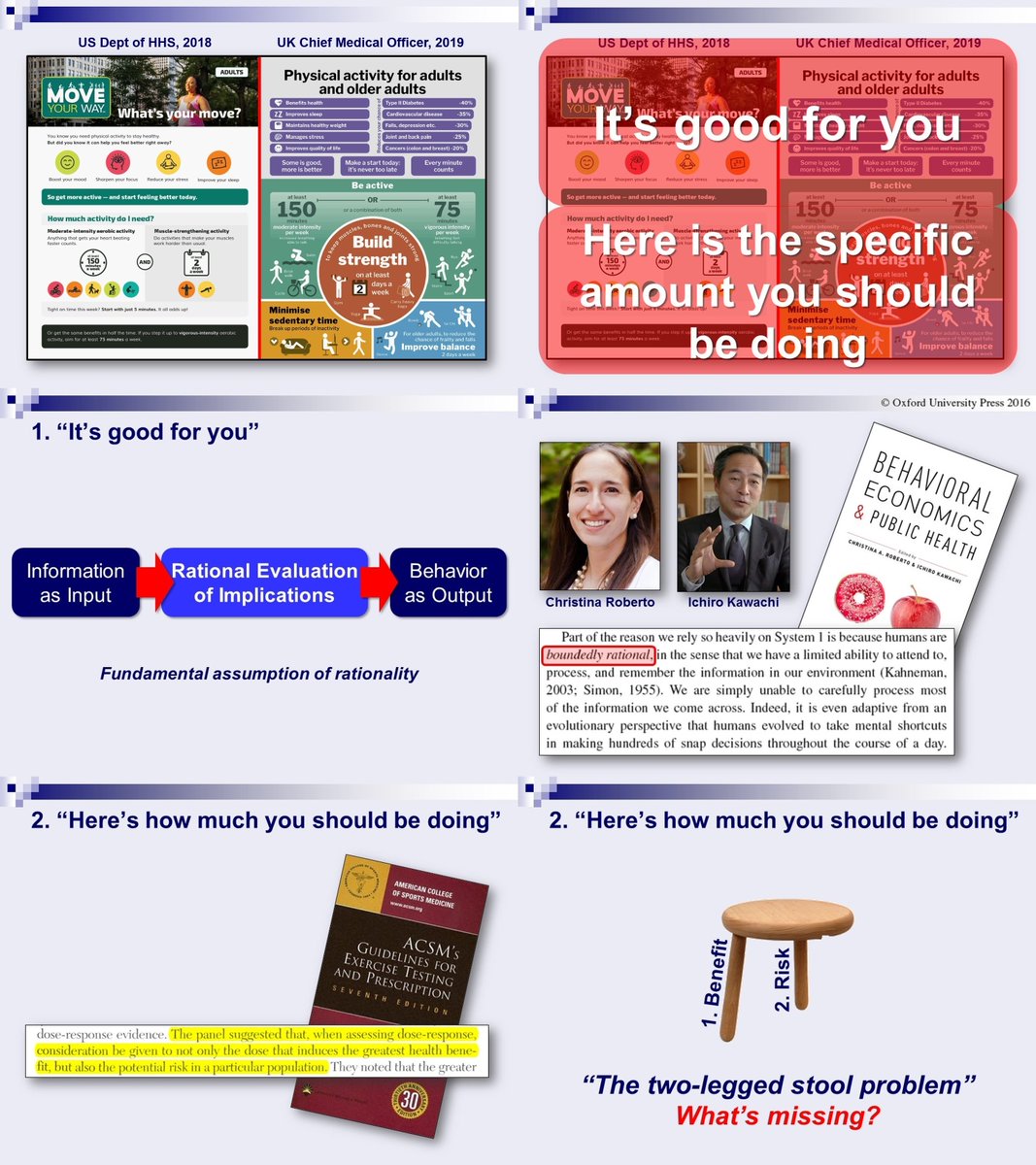
Inspired by the proposal of this large multinational collaboration, consisting of many outstanding colleagues from the field of exercise science, I wanted to share some thoughts that may be useful to readers who wish to place more emphasis on vigorous intensity in public health. 

Let's begin with the argument that vigorous/high intensity is needed because it provides "time-efficient" physical activity options, & time efficiency is the answer to the primary barrier to PA participation, namely "lack of time." The argument is popular for the past 15-20 years 

This argument is fallacious. Strangely, in adopting this argument, we have chosen to disregard decades of research in labor patterns and time use. Time-use surveys show large increases in discretionary time in Western countries (e.g., +4-5 hours per day in the US, 1965-2003). 

The problem is that this extra discretionary time is not being allocated to exercise or physical activity but rather to sedentary leisure activities, primarily TV and, more recently, online media consumption. 

We now have multiple indications that statements to the effect "I am not physically active because I don't have time" are more likely to be a socially acceptable excuse within a culture that places great value on being "busy" (i.e., Calvinist work ethic). But they are not true. 



In my own quick-and-dirty analysis of American Time Use Survey data, I found that women allocate 12.66 times and men allocate 10.03 times more time on just 2 sedentary activities (watching TV & video) than they do on all reported varieties of physical activity and sport combined. 

Time allocation to *vigorous* physical activity, in particular, appears to be almost entirely absent from daily time budgets. This is extensively documented in numerous accelerometer-based studies. One of the first was Metzger et al. (2008) based on 2003-2004 NHANES. 

Perhaps most memorably, out of thousands of people, only 23 accumulated 20 minutes of vigorous-intensity on at least 3 days per week. 

A latent class analysis on 2003-2006 NHANES (7,931 adults), could not even distinguish a class of individuals doing vigorous activity because there were just too few of them. 

Members of the outstanding team behind the recent proposal have contributed data from multiple sources, all converging on the observation that adults do only a handful of minutes of vigorous activity per day (normal-weight ~7, overweight ~5, obese ~3 minutes per day). 



If people avoid vigorous-intensity physical activity almost universally and completely, it would be interesting to identify the principle people use to make such time-allocation "decisions" (which are most likely automatic and subconscious). Thankfully, there is research on this! 

The principle that evidently drives these time-allocation decisions, a principle proposed by Juster (1985) that now transcends time-use research, is that people allocate their discretionary time largely on the basis of the "satisfactions" they derive (i.e., pleasure, enjoyment). 

When people like (the late) Alan Krueger, Daniel Kahneman, David Schkade, Norbert Schwarz, and Arthur Stone are telling us that, to understand time allocation, we need to understand the pleasure, enjoyment, and well-being derived from daily activities, I think we should listen. 

WHY do people avoid vigorous-intensity activity? If only there was research on this, to help us understand... But there is! We have just chosen to ignore it. We have known for years that people don't care much about duration but they do care about large negative affective peaks. 

There isn't a lot of research on this in physical activity but there are indications that, given a choice, people choose to lower intensity even if this means that they have to exercise longer. Remember: people generally neglect duration but care about negative affective peaks! 

Bottom line: When we advocate for more vigorous-intensity activity, even intermittent, we are pushing for (a) a type of activity that is almost universally avoided, and (b) a type of activity that is likely to induce negative affective peaks, which probably explains (a).
Of course, we are all on the same team and we all want the same outcome. But in coming up with creative ideas for solving the inactivity problem, we cannot afford to ignore decades of valuable research in related fields, including our very own exercise psychology.
As I have been saying for years, any new idea about how to solve the inactivity problem MUST comply with the "prime directive": self-determined people must be willing to return tomorrow, and for the rest of their lives, to do the "new" type of activity we are advocating again.
Other considerations (e.g., maximizing or accelerating physiological adaptations) must be considered secondary. Anything that is likely to violate the "prime directive" should be rethought - and evaluated against the accumulated scientific knowledge from relevant research fields.
• • •
Missing some Tweet in this thread? You can try to
force a refresh












